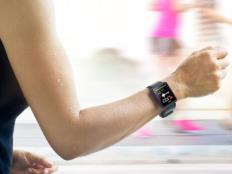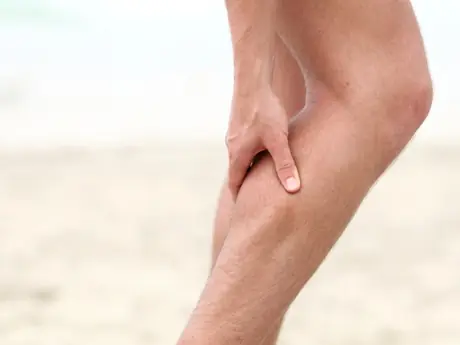Hydration and Fueling Are Important
Two simple facts to remember. When you run the marathon, you start to run slower when you lose too much water. Thus, you need to replenish this lost water at the aid stations. Second, you don't have enough stored glycogen in your body to finish a 26.2-mile race. While your body will tap into fat stores to help you run the race, you'll be well served to take in sugars, either in the form of a sports drink or in the form of gels, during the race.
More: Making Sense of Performance Gels
So here's the deal: You need to practice these two things before the big day. The best time to practice them is on your long run. There are many solutions, with perhaps the easiest being a "fuel belt" that has little bottles you can put water or a sports drink in, and a pouch that could hold a couple of gels. Another way to practice is to find a loop—say 4 miles—and simply set up cups or bottles on a car or even a folding table, and practice running by and learning to drink from an open cup (this will allow you to practice drinking from an "aid station" several times during a 16- or 20-mile run).
More: Best Long-Run Hydration Habits
Some people will simply run the race with their belt, while others don't want that extra weight and are comfortable taking liquids from the aid stations. Either way, you need to hydrate and fuel during the marathon, and you need to practice this skill before race day.
You Will Likely Have a Couple of Rough Miles
Even the best marathon runners in the world report having a bad mile or two during the marathon, even when they go on to win or set a PR. This is different from other distances, such as the 5K or 10K, where PR days usually come when you gradually feel less comfortable as the race goes on, but you usually don't have a middle mile that goes poorly.
So just roll with it. Be mindful of your respiration, and if you're really hurting, try to find someone running your pace and get near them, then just follow along. If you can stay focused for that mile (or two), you have a very good chance of feeling better.
More: 2 Workouts to Make Marathon Race Pace Feel Easier
And with the earlier point in mind, stay patient for a mile or two after an aid station for your body to process the fact that your brought some sugars on board. The body responds positively to bringing in fuel during the marathon, yet for most people there is a bit of a delay before you feel better.
The marathon is a great challenge for all runners, but you need to be mindful of a handful of lessons to run to your potential on race day.
More: Race-Weekend Preparation for Runners
 Sign up for your next marathon.
Sign up for your next marathon. - 3
- of
- 3
About the Author

Get ACTIVE on the Go


Couch to 5K®
The best way to get new runners off the couch and across the finish line of their first 5K.
Available for iOS | Android






Discuss This Article